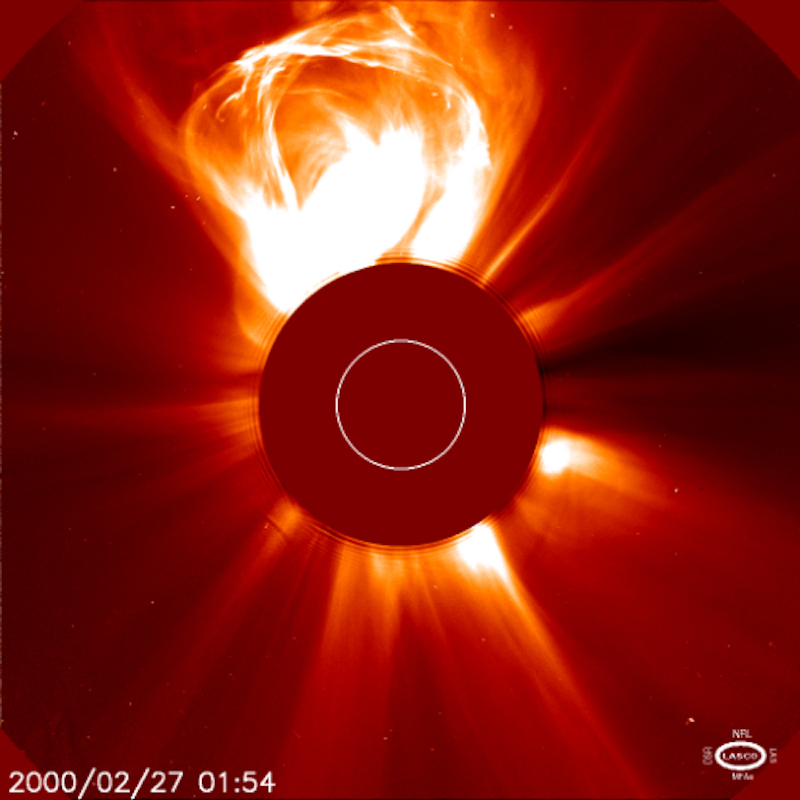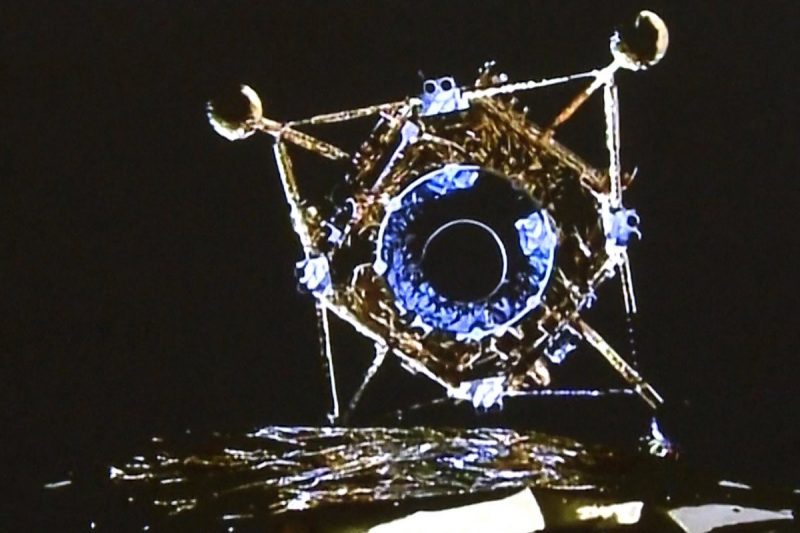ChinaDaily reported this week (January 20, 2021) that the Chang’e 5 moon craft – which on December 16-17 dropped off its return capsule, returning moon rocks to Earth for the first time since 1976 – is now on a new mission to observe the sun. That’s after an earlier report on December 22, saying the same thing. The news may be that mission engineers originally overestimated the amount of fuel remaining to Chang’e. In December, they were estimating 440 pounds (200 kg) of fuel left. Now, as explained in the video above, space engineers are reporting just 220 pounds (100 kg) of fuel remaining. The fuel is needed to insert Chang’e into an orbit at an Earth-sun Lagrange point (L1) when it arrives there in mid-March.
Pei Zhaoyu, deputy director of the China National Space Administration’s Lunar Exploration and Space Program Center and spokesman for the Chang’e 5 mission, said in an update this week that L1 is an ideal position for monitoring solar activities. As reported by ChinaDaily:
The point is a place where the gravity from the Earth and the sun balance, so that the probe may orbit the sun in synchronization with the Earth without spending much of its fuel.
Two NASA missions – the Solar and Heliospheric Observatory (SOHO) and the Deep Space Climate Observatory (DSCOVR) – also operate from the Earth-sun L1 point, which isn’t really a point, but more like a region of space.

The Chinese Lunar Exploration Program – also called the Chang’e Project – is named for Chang’e, a Chinese moon goddess.
After launching on November 23, 2020, Chang’e 5 orbited the moon for about a week. The extended mission is possible because Chang’e 5’s insertion into lunar orbit was picture-perfect; however much propellant Chang’e 5 has left, it’s been enough so far to send it in another direction in space. Following its capsule release at Earth, the craft was able to perform the maneuver that sent it toward L1.
Once at the L1 point, the craft is expected to observe the sun and take readings of what’s called space weather, conditions in space caused by activity on the sun. Since Solar Cycle 25 has just begun, solar activity can be expected to increase in the coming months and years. That means more sunspots, more flares on the sun, and more powerful coronal mass ejections sweeping through our solar system, potentially affecting earthly technologies.

As reported by SkyandTelescope.org on January 21:
An update from the China Lunar Exploration Program (CLEP) on January 19 states that the spacecraft is now 1.43 million kilometers (889,000 miles) from Earth …
SkyandTelescope.org also reported on other Chinese space missions:
China also repurposed the service module of the Chang’e 5 T1 mission, a test mission that launched in 2014 to test the high-velocity lunar return and skip-reentry required for the later sample return [its test sample return module, named Xiaofei or little flier, landed successfully back in China in 2014]. The module traveled to Earth-moon Lagrange point 2, on the other side of Earth from the sun. That turned out to be a trial run for a relay satellite that facilitated Chang’e 4’s unprecedented landing on the lunar far side.
The Chang’e 5 extended mission marks a first excursion inside Earth’s orbit. Elsewhere, China’s first independent interplanetary mission, Tianwen 1, is due to enter Mars orbit on February 10. A rover landing attempt is expected to follow in May.

Bottom line: China’s Chang’e 5 moon mission – which successfully returned moon rocks to Earth in December 2020 – is now flying toward a sun-Earth Lagrange point, L1. It is expected to arrive there in mid-March.
Read more from December 22: China’s Chang’e moon craft begins extended mission











